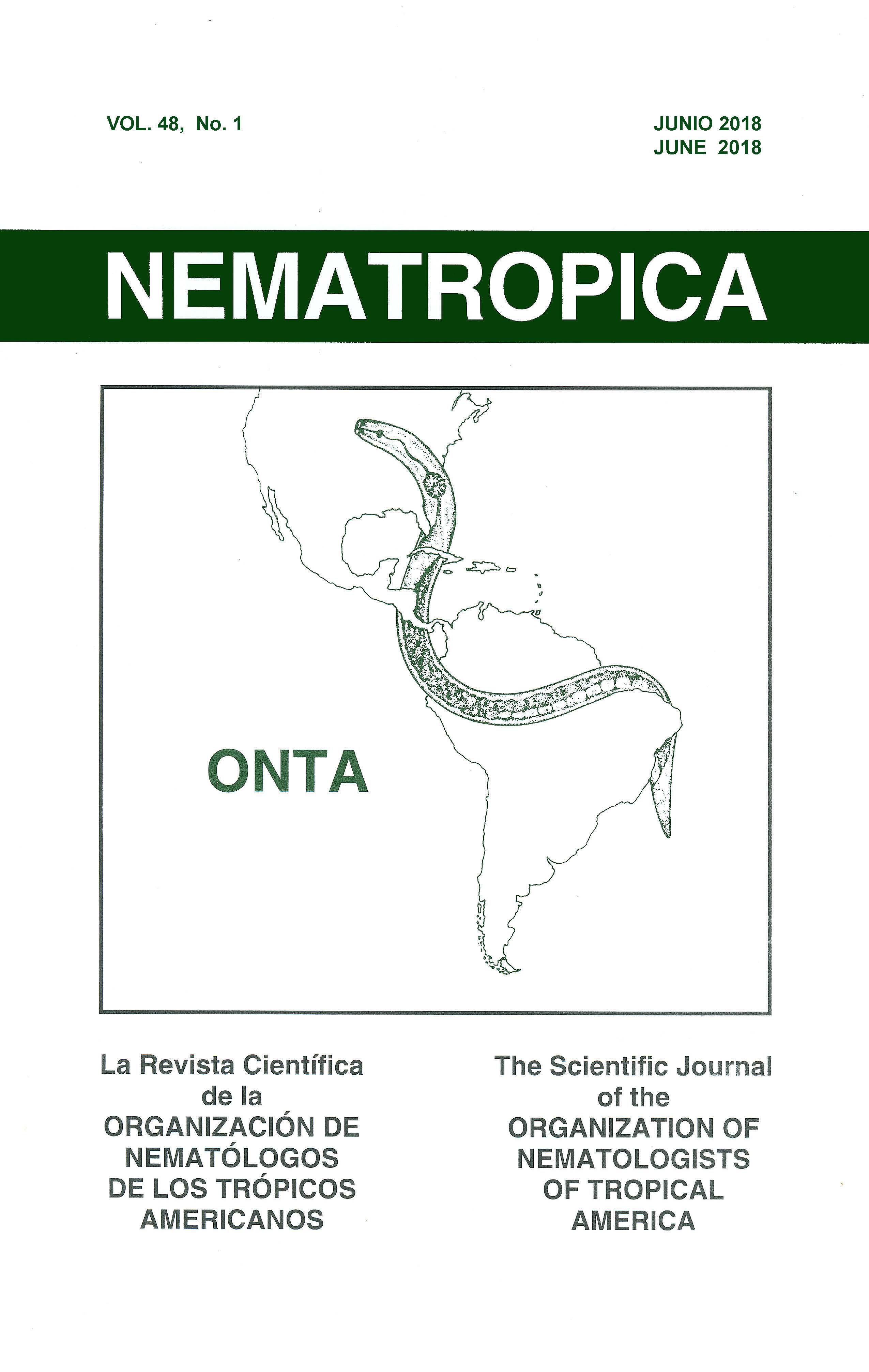EFFECT OF SEVEN ELITE CASSAVA (MANIHOT ESCULENTA CRANTZ) VARIETIES TO INFECTION BY MELOIDOGYNE SPP. AND OTHER NEMATODES IN THE FIELD
关键词:
carbofuran, cassava, Meloidogyne, plant-parasitic nematodes, yield摘要
Cassava (Manihot esculenta Crantz) has seldom received attention by nematologists because of the erroneous belief that it was too hardy to be significantly damaged by nematodes. In this study, cassava varieties (TMS 98/0505, TMS 01/1368, TMS 98/0510, TMS 30572, TME EB419, TMS 95/0289, and TMS 98/0581) from the International Institute of Tropical Agriculture were evaluated for their field response to infection by Meloidogyne incognita and 10 other plant-parasitic nematodes (PPN) at the Federal University of Agriculture, Abeokuta. Cassava growth and yield were compared in naturally infested PPN plots treated with and without carbofuran (3 kg a.i./ha). Aphelenchoides, Tylenchus, Longidorus, Pratylenchus, Hoplolaimus, Rotylenchus, Helicotylenchus, Trichodorus, Xiphinema, Meloidogyne, and Scutellonema were identified in the soil. Infected plants were scored for galling (as a result of Meloidogyne infection only) on 1-5 rating scale. Carbofuran-treated plots had significantly (P≤ 0.01) lower final densities of Meloidogyne and other PPN, and no galls were observed on feeder roots. The majority of crop growth and yield improved in plots treated with carbofuran. Significantly fewer storage roots rotted, and yield of all the cassava varieties was significantly higher (4.05-6.10 kg/plot) in carbofuran-treated plots compared to untreated plots (2.33-4.95 kg/plot). The average tuber yield of the carbofuran-treated and untreated plots was 51.3 and 34.1 T/ha, respectively, and the difference was significant across varieties (TMS 01/1368 and TMS 30572). This work suggests that cassava production can be improved by controlling nematodes in the field.

